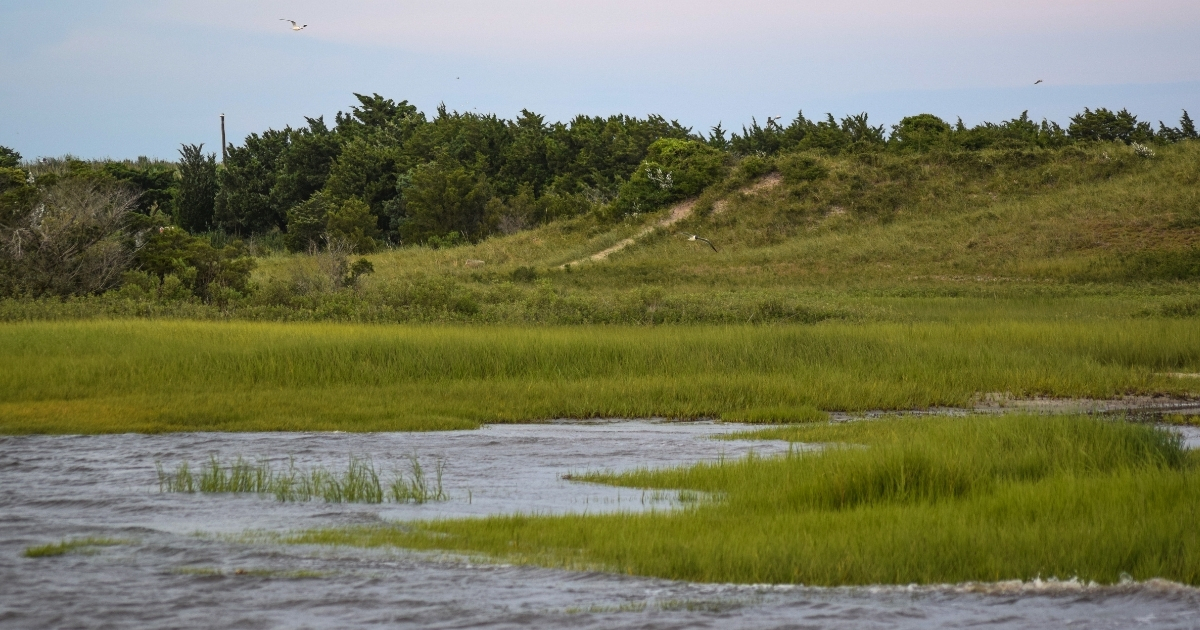
Category: Earth, Ocean and Environment

August 17 Ocean Currents Lecture to Focus on Mapping Elevation Levels in Delaware’s Coastal Marshes
August 10, 2023 Written by Adam Thomas
Dan Warner, an associate scientist with the Delaware Geological Survey (DGS), will give the last University of Delaware Ocean Currents Lecture of the summer at 7 p.m. on Thursday, August 17 in Room 104 of the Cannon Lab on UD’s Hugh R. Sharp Campus in Lewes.
Warner’s talk will focus on his work with DGS and how he is trying to improve elevation models of coastal marshes in Delaware.
In order to map elevation levels in coastal marshes, the normal tactic has been to use lidar on surveying planes that fly over certain targets and illuminate those targets with rapid pulses of laser light and measure the reflected pulses with a sensor. While this is a great surveying technique for many environments, when it comes to coastal marsh habitats, the lidar has a tough time penetrating the thick, grassy vegetation that sits on top of most of the marshes and it can’t distinguish between the ground and the vegetation.
That means when scientists make an elevation model, all lidar pulses, whether reflected from the ground or tall grasses, is included. This leads to an elevation model that is both noisy and positively biased, or higher than the actual ground surface.
This can cause a big problem for marsh habitat where a tiny difference in elevation accuracy can mean a big difference in flooding patterns. This is particularly concerning given the relatively high rates of sea level rise that Delaware coastlines are experiencing.
Warner, who received his doctorate from the University of Delaware in Water Science and Policy, said his lecture will highlight how he has tried to improve elevation models for coastal marshes. His work builds off of prior research done by Catherine Medlock and Tom McKenna, which looked at the Murderkill, St. Jones, Leipsic River and Blackbird Creek Marsh, by expanding the area to look at all of the coastal marshes along Delaware Bay.
“In terms of the greater ecological implications, in any sort of coastal hydrodynamic model, the ability of the soils to store carbon and distribution of habitats are all influenced by how often the marsh floods and how long the water stays on it,” said Warner. “If we want to get a good picture of marsh hydrodynamics, we need accurate elevation data to be able to simulate marsh flooding, how it wets up and how it dries down. The whole motivation of this was to build an improved data product for the whole state that removes some of the error and reduces some of the vertical bias from the coastal marsh data.”
Warner said that he and other members of the DGS conducted GPS surveys with high precision GPS units to determine individual points of error from the lidar data. Whereas the lidar data has plus or minus 14 centimeters of error, the GPS survey points have only plus or minus one to two centimeters of error, allowing for a much more accurate map of the coastal marshes.
They also worked with some data from the Partnership from the Delaware Estuary and in the end, they were able to have over 1,000 high precision GPS data points for evaluating the error and bias of an existing coastal digital elevation model (DEM). The hope is that this DEM can be used to support investigations of coastal inundation, and any large-scale research that involves the flooding and drying of Delaware’s marshes.
“If we look at the original data that we got from the 2014 lidar flights, almost 10 years ago now, when we take that and simulate it to flooding to the mean or highwater mark, a substantial percentage of the marsh appears to not be flooded,” said Warner. “But when you use our corrected DEM, way more of the marsh gets flooded.”
Warner said this is important as most studies are only as good as the data and the models they use for their research.
“The way we interpret our studies, things can depend heavily on the quality of the data products going in,” said Warner. “So if you don’t account for this known bias and error in the coastal marsh DEMs, you could be drawing misguided interpretations on the hydrodynamics of the marsh.”
For more information on the Ocean Currents Lecture series and to register for the talk, visit https://ud.alumniq.com/index.cfm/events:register/home/eventId/8560
